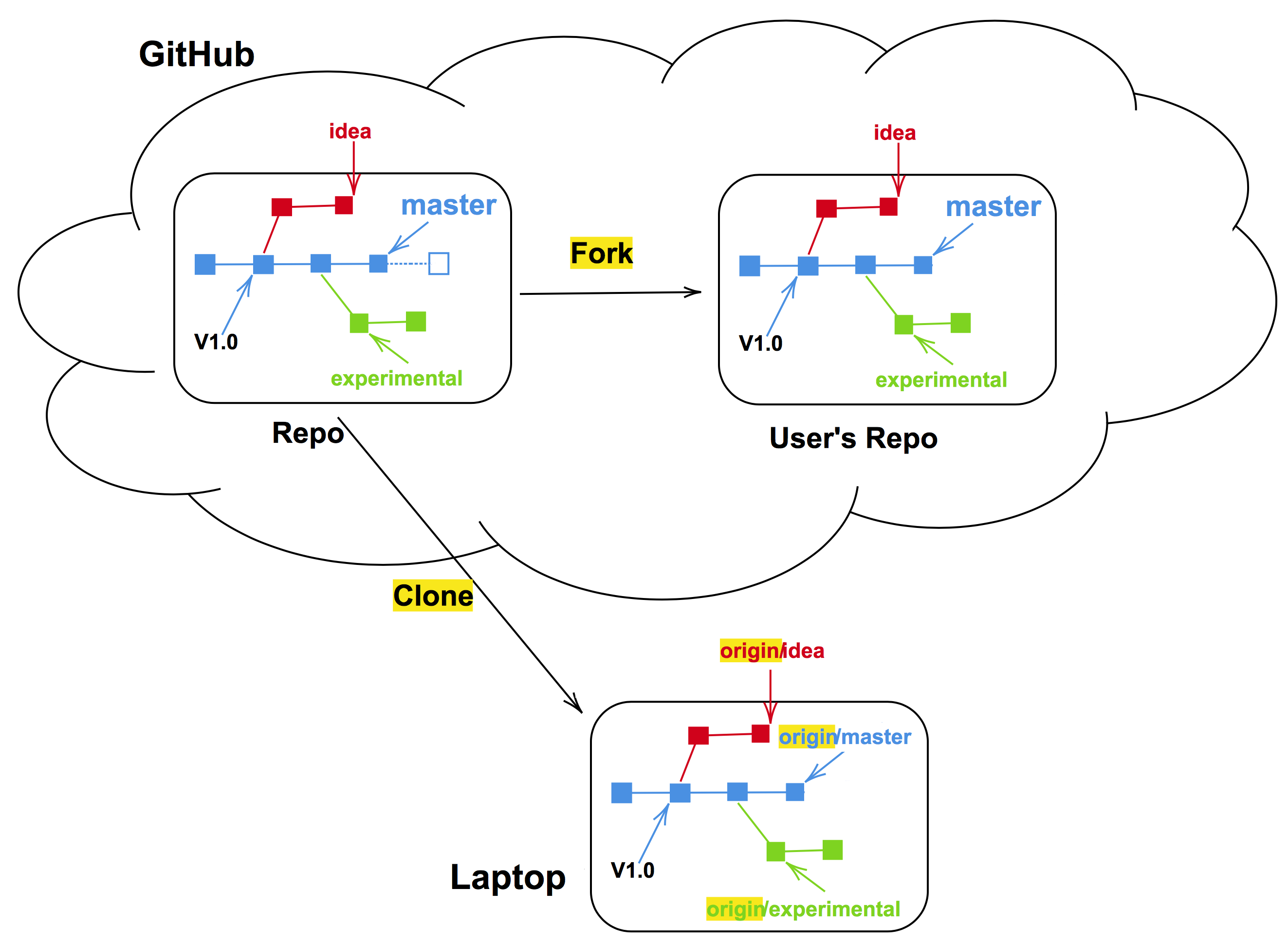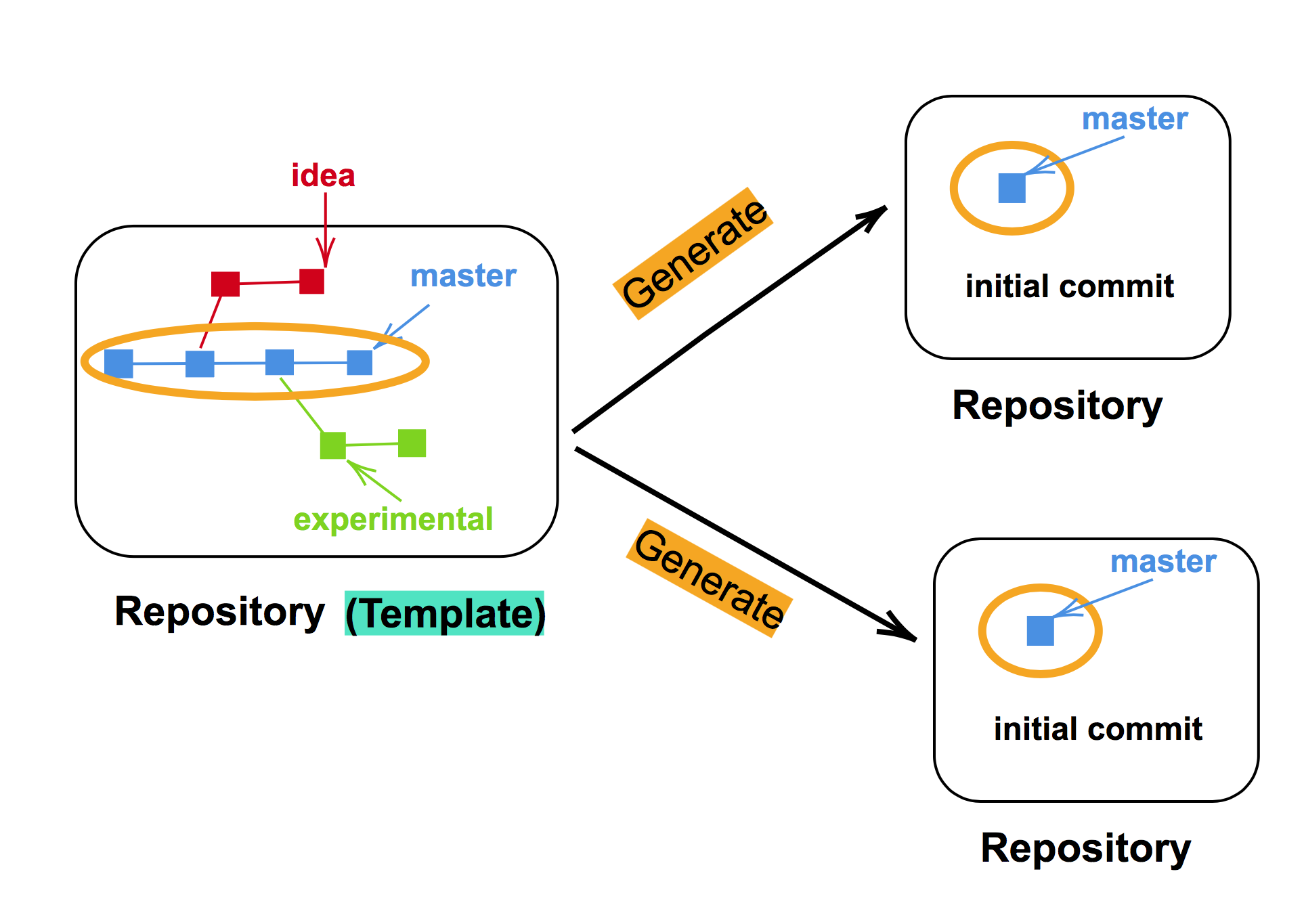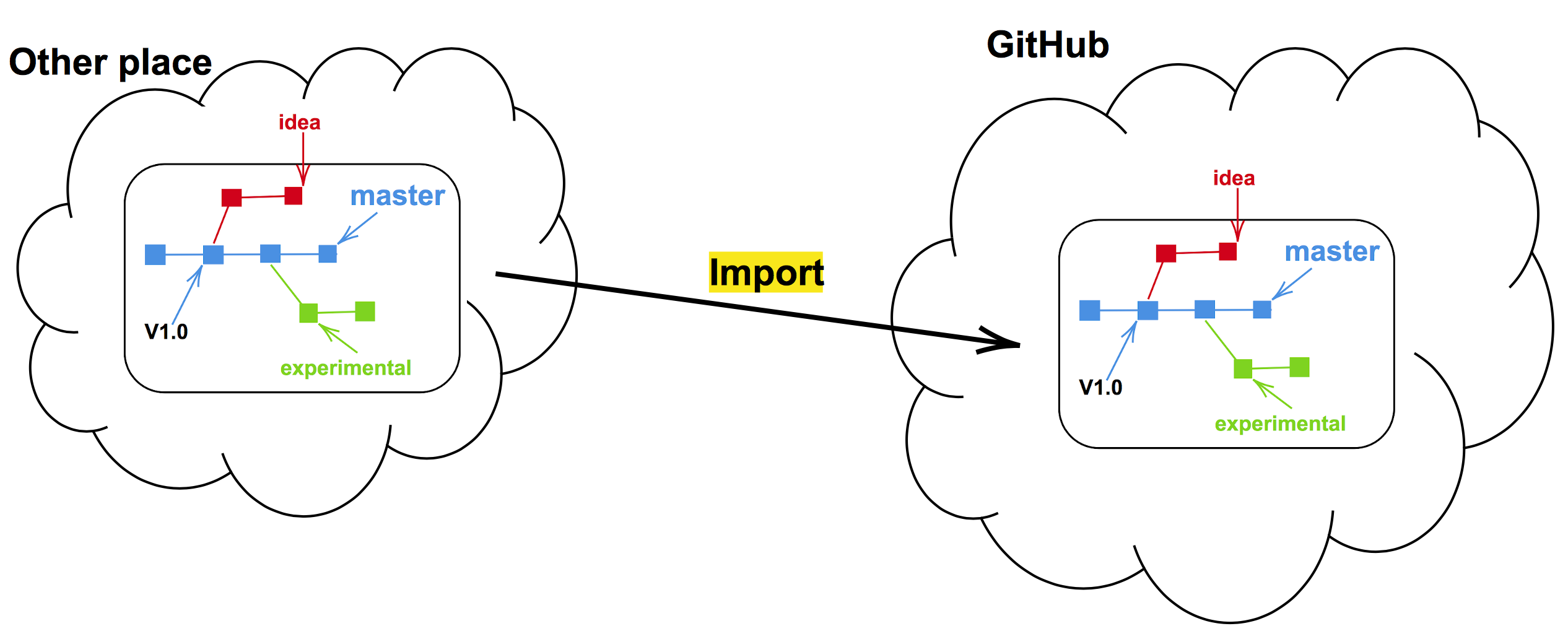
Overview
Teaching: 20 min
Exercises: 0 minQuestionsObjectives
- How can we backup repositories?
- How can we share repositories with others?
- How can we keep repositories in sync?
- What are different ways to make a copy of the entire repository?
- Be able to decide whether to divide work at the branch level or at the repository level.
Motivation
- Let’s say that someone has given you access to a repository online
- … and you want to contribute to it.
- It is quite easy to make a copy and send a change back.
- First, we do this a relatively simple way: get repository, make a change locally, and send the change directly back.
- Then, we make a “pull request” that allows a review.
- Once we know how code review works, we will be able to propose changes to repositories of others and review changes submitted by external contributors.
Commits, branches, repositories, forks, clones
- repository: The project, contains all data and history (commits, branches, tags).
- commit: Snapshot of the project, gets a unique identifier (e.g.
c7f0e8bfc718be04525847fc7ac237f470add76e). - branch: Independent development line, often we call the main development line
masterormain. - tag: A pointer to one commit, to be able to refer to it later. Like a sticky note that you attach to a particular commit (e.g.
phd-printedorpaper-submitted). - cloning: Copying the whole repository to your laptop - the first time. It is not necessary to download each file one by one.
- forking: Taking a copy of a repository (which is typically not yours) - your copy (fork) stays on GitHub and you can make changes to your copy.

Generating from templates and importing
There are two more ways to create “copies” of repositories into your user space:
- A repository can be marked as template and new repositories can be generated from it, like using a cookie-cutter. The newly created repository will start with a new history, only one commit, and not inherit the history of the template.

- You can import a repository from another hosting service or web address. This will preserve the history of the imported project.

Discussion/exercise
- Visit one of the repositories/projects that you have used recently and try to find out how many forks exist and where they are.
- In which situations it could be useful to start from a “template” repository by generating?
Synchronizing changes between repositories
- We need a mechanism to communicate changes between the repositories.
- We will pull or fetch updates from remote repositories.
- We will push updates to remote repositories.
- We will learn how to suggest changes within repositories on GitHub and across repositories.
- We will learn how to update forks by pulling/fetching changes and pushing them to forks.
Key Points
git clonecopies everything: all commits and all branches.Branches on the remote appear as (read-only) local branches with a prefix, e.g.
origin/master.We synchronize commits between local and remote with
git fetch/git pullandgit push.Repositories that are shared online often synchronize via pull requests or merge requests.
Repositories that are forked or cloned do not automatically synchronize themselves.